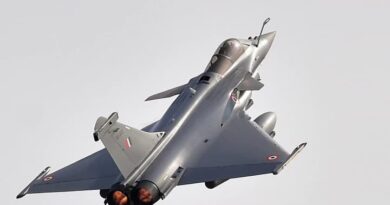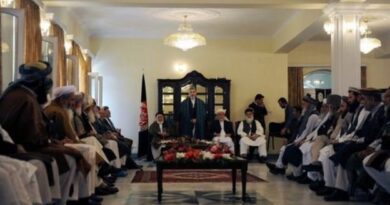What happened to Osama bin-Laden’s al-Qaeda? Know the whole situation
On the 19th anniversary of the September 11 attack in the United States, the terrorist jihadist group al-Qaeda in Afghanistan has disintegrated.
One of its branches in Syria was disbanded in June this year by a rival group; In Yemen, he was defeated by rebels shortly after his leader was killed in an American drone attack; And the name of his successor has not yet been revealed after the death of his leader in a French attack in Mali this year in North Africa.
Meanwhile, al-Qaeda leader Ayman al-Zawahiri has had a connection for months.
No, by which there is no doubt that they did not die or were killed.
But al-Qaeda’s branches in Africa are still strong – in Somalia and Mali.
Al-Qaeda has also faced a crisis of the same ideology that other jihadi groups are struggling with.
There are two options before him – one is that he should become modern and reach out to ordinary Muslims and basically preserve his existence in some way; And the second option is to stick to their fundamental jihadist principles and keep Muslims isolated from the rest of the world.
Both options have their own risks.
If he chooses the first option, then this can shake his own jihadi identity and break the faction, while the danger of the second option is that his hands will be tied up so much that his existence will be threatened.
Recent hits
Al-Qaeda is represented in Syria by its undisclosed faction Hurras al-Din, but it could not make its way. Some of the reason for this is the rift between the jihadis and some reason is that they were constantly monitored under the leadership of America.
In Syria too, the faction was denied at the ground level because Al-Qaeda is a threat to the Syrian people and because of this, the government and international forces can act on them.
Hurras al-Din has been lying dormant for more than two months, when a more influential faction there confronted them and many of their top officials became targets in the US air strike.
Its branch in Yemen – Al-Qaeda in Arabian Peninsula (AQAP) was at one time counted among al-Qaeda’s most dangerous factions, but this year it was hurt several times and is now one of the least dormant branches of al-Qaeda. Is one.
In January this year, the head of the AQAP died in an American drone strike, and recently a stronghold was snatched by Houthi rebels in Baida province of Yemen.
For years, it seemed that the spies had infiltrated the AQAP and because of them many key leaders of the group could be targeted.
AQAP was also struggling with infighting.
But this year there was an incident that felt that AQAP is still doing the work for which it has been infamous – carrying out “lone wolf” attacks in the western countries, that is, to attack a single attacker.
In February, the group said it had a hand in the deadly shootout at the Pensacola naval base in Florida, USA. This attack was done by Mohammed AlSharamrani, a trainee soldier of Saudi Arabia. The US confirmed the attacker’s contact with the group later.
Also in June this year, an Algerian leader of al-Qaeda in the Islamic Maghrib (AQIM) was killed in a French attack in Mali. This group is one of the least active groups of al-Qaeda.
Even after three months, the group has not chosen its successor.
The reason for this is not clear, but the vacancy in the chair of its leader, whatever it is, tells that everything is not going well in the group.
Al-Qaeda has found it difficult to find a foothold in Algeria and North Africa, because there is no blurring of memories of the jihadists of the 90s when the ultra-extremist faction Armed Islamic Group (GIA) was targeted by many Algerian citizens Was held responsible for the death.
The Mali-focused group Jamaat Nusrat al-Islam Val-Muslimeen (JNIM) was formed in March 2017. He is also active in Burkina Faso and in Nijer in between.
JNIM is the second most active branch of al-Qaeda in Somalia, after al-Qaeda affiliate al-Shabaab.
JNIM specifically targets local troops and foreign armies, particularly French troops in the Sahel.
But in recent months, it seems that he has lost focus due to the fight against the Islamic State faction.
JNIM expressed in February this year that it agreed to negotiate with the Mali government, but the future of JNIM was unclear after the government fell into rebellion there in August, and a new government came into being.
Meditation on Jerusalem
Currently, al-Qaeda is the most powerful and dangerous group without any doubt – al-Shabaab.
Most of the rural areas of central and southern part of Somalia are currently under the occupation of al-Shabaab and their power runs there.
In addition, al-Shabaab accepts responsibility for daily attacks, major attacks within Somalia, and attacks in neighboring Kenya.
The major attacks he has done this year include the January attack on the US-based Manda Bay military base in Kenya in which three Americans were killed and several aircraft were destroyed. Then recently, in August, he attacked a hotel on the beach in Mogadishu where government officials visit and killed more than a dozen people.
Al-Qaeda launched a Jerusalem-centric military and propaganda campaign in 2019 on the back of major attacks by al-Shabaab and JNIM. He also repeated this in 2020 and said that his ultimate goal is “freedom of Palestine” and America is his biggest enemy.
Message for america
Al-Qaeda leader Ayman al-Zawahiri has appeared only once this year, when a video of him appeared in May.
A month before that, supporters of the Islamic State raised doubts that Zawahiri had either died or been killed and that he had become disabled.
He made this guess on the basis that neither a video of Zawahiri is coming now, nor he is giving any statement on big events.
Many top al-Qaeda leaders have been killed in the Afghanistan-Pakistan region in the past or killed in US drone strikes in Syria.
After the US-Taliban peace treaty in February, al-Qaeda has also found it difficult to remain safe in Afghanistan-Pakistan because the treaty states that the Taliban will not shelter any international jihadist organization.
Meanwhile, al-Qaeda has sought to gain support for its messages against the US by taking advantage of the Corona epidemic and anti-apartheid demonstrations in the US.
The faction has told the people of the West, and especially the Americans, that their governments have not supported them in the epidemic, and that racism with African-Americans in the US will not end without an armed struggle.
But there is doubt that even if this message reached America, the people of the country whose land he has launched the biggest extremist attack, will listen to the views of one such group.




